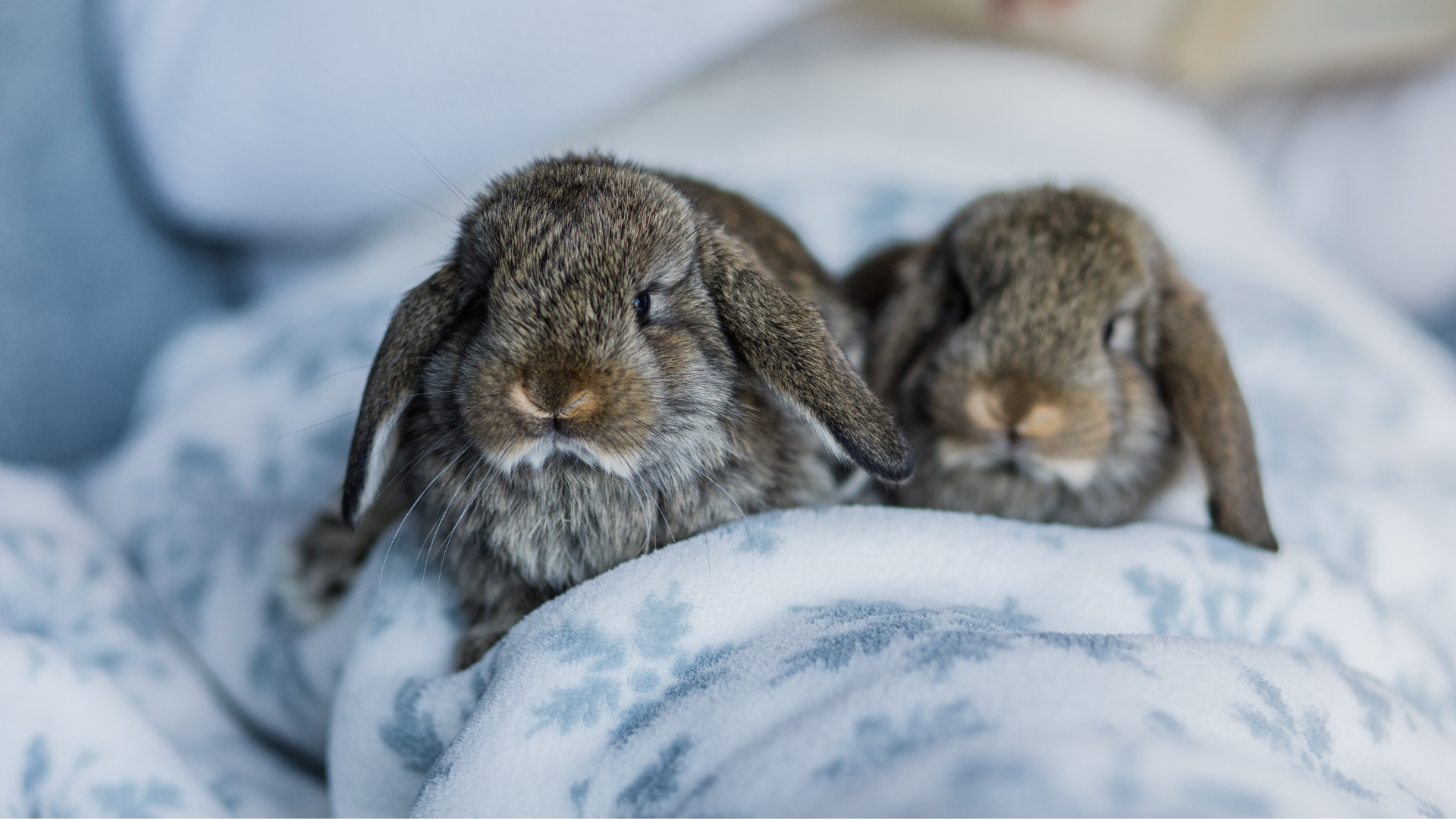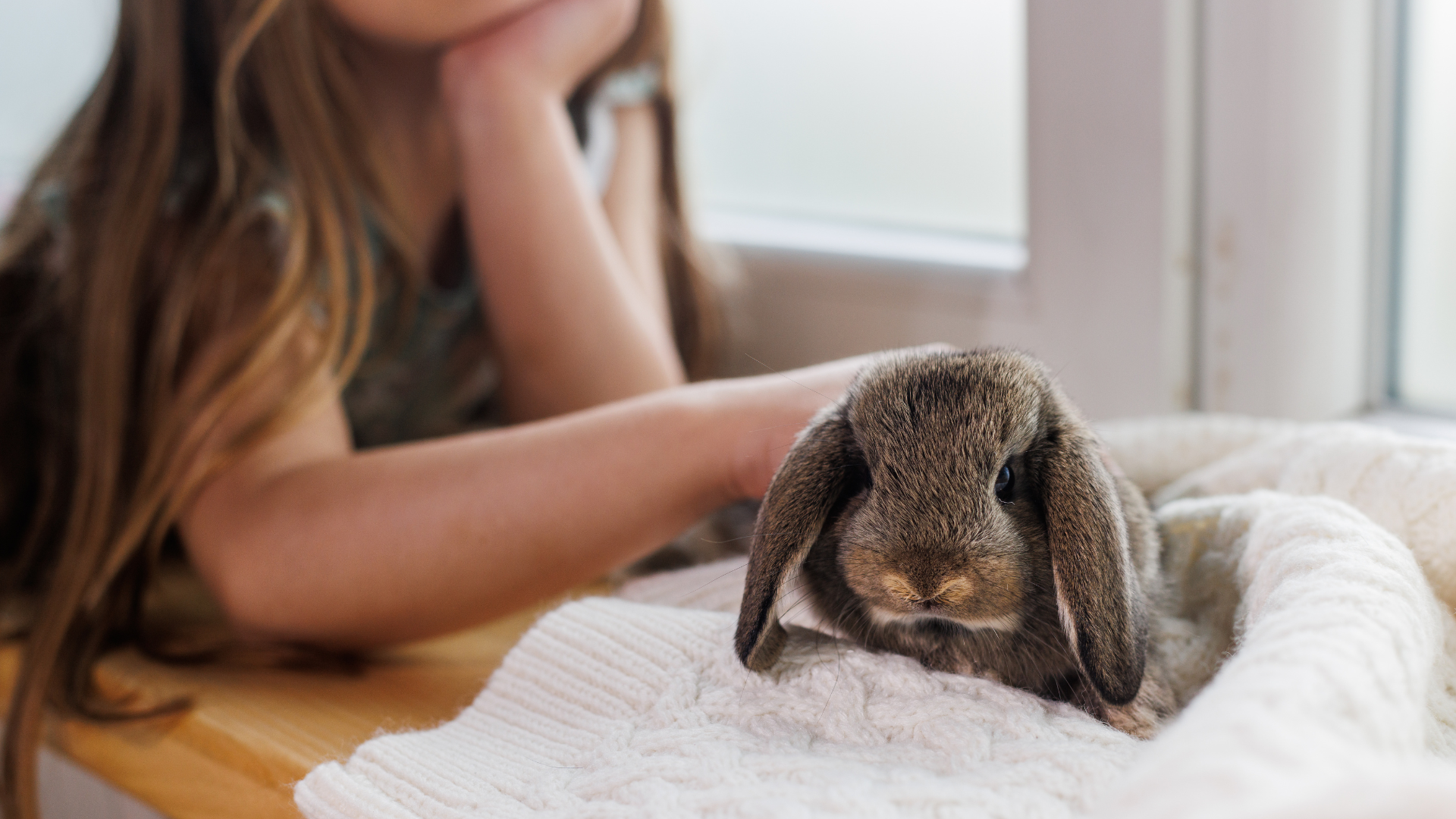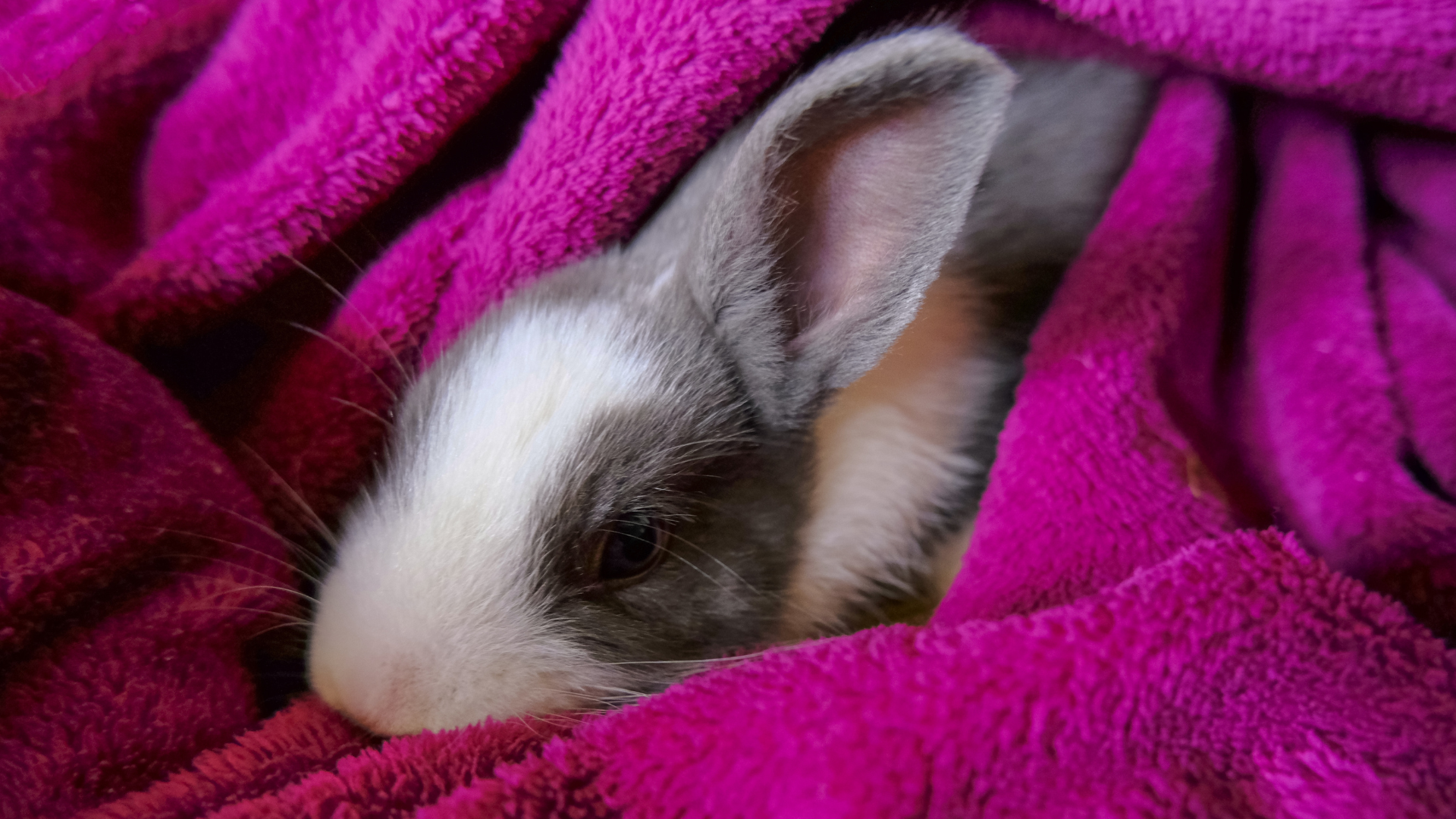
As the weather gets colder, you might be wondering how to keep a rabbit warm in the winter. That's why we've called in vet Dr. MacMillan to share her expert advice and answer your important questions like, 'How cold is too cold for a rabbit?'
There are lots of ways that you can keep your bunny warm, like putting extra insulation in the best outdoor rabbit hutch and making sure that no drafts can get in. If your rabbit gets too cold, it can lead to hypothermia, frostbite, or even death, so it's essential you take all the steps listed below.
You might be curious how wild rabbits do so well in frosty climates, and Dr. MacMillan explains that it's because they're better adapted. She says: "Wild rabbits are better adapted to very low temperatures and live in groups that can snuggle up to each other in small cozy burrows."
How do I keep my rabbit warm in the winter?
Here are her top tips for keeping your rabbit warm in the winter:
1. Give them a warm place to rest
To keep your bunny toasty when they're sleeping, make sure you provide them with more nesting materials, like the best bedding for rabbits. You could also put a fleecy cover over a heat pad (like this one on Amazon), but just make sure it's chew-proof like the one we recommend below.
Dr. MacMillan adds: "You could also line the area with newspaper which will provide extra insulation. [This will also] help to soak up any spills or moisture from toileting which might make things cold and damp. Rabbits are best kept in pairs or groups, and you will find that they can stay warm by snuggling with their companions for extra body heat. A single rabbit is more susceptible to drops in temperature."
2. Ensure their home and exercise area is in good repair
Have a look around for damp patches that can cause mold, ammonia build-up, and respiratory issues for your bunny. You'll also need to lift their living quarters off the ground to prevent them from becoming rotten or damp and check for any cracks to stop drafts.
The roofing needs to be watertight to keep them dry and you should insulate their home with materials like blankets and old carpets. You can also put a waterproof cover or tarpaulin over the top.
Dr. MacMillan adds: "Just ensure that they still get some ventilation through any wire mesh areas, these could be covered with a loose-fitting transparent sheet of plastic."

3. Move them indoors if you need to
Be prepared to move your rabbit indoors if the weather gets too cold – especially if it's snowy or icy! If you can't bring them into your home, you could put them in an unused garage or a large shed, but they'll need a window for some natural light and one of the best indoor rabbit hutch setups.
Dr. MacMillan says: "Remember that if this space is unheated then their enclosure will still need the extra insulation and bedding that was advised earlier."
4. Check their water and food
This step doesn't technically keep them warm, but it's something that should definitely be on your checklist! In the winter, water bowls and bottles can freeze up so you'll want to check them daily to ensure they have access to fresh water.
Dr. MacMillan says: "Make sure that your rabbits get enough greens during the winter, alongside ad-lib hay. They won’t be able to forage as easily for dandelions and grass when it is cold and frosty."
Here's some more expert advice on what to feed a rabbit and a guide to the best hay for rabbits.
What temperature is too cold for rabbits?
You should keep your rabbit's home between 50-68° F (10-20°C). According to Dr. MacMillan, this is the temperature that most bunnies prefer to live in, so they'll be happy if it's in this range.

How do I know if my bunny is warm enough?
Your rabbit will display all their normal behaviors if they warm enough, like playing, eating and producing lots of feces. However, if you're still concerned, Dr. MacMillan suggests measuring their environment's temperature with a thermometer.
She adds: "Rabbits don’t hibernate, so if yours seem quiet, limp, or very sleepy then take them to a vet immediately."
Found this helpful? We also have a guide with tips from a vet on housing rabbits outdoors.







